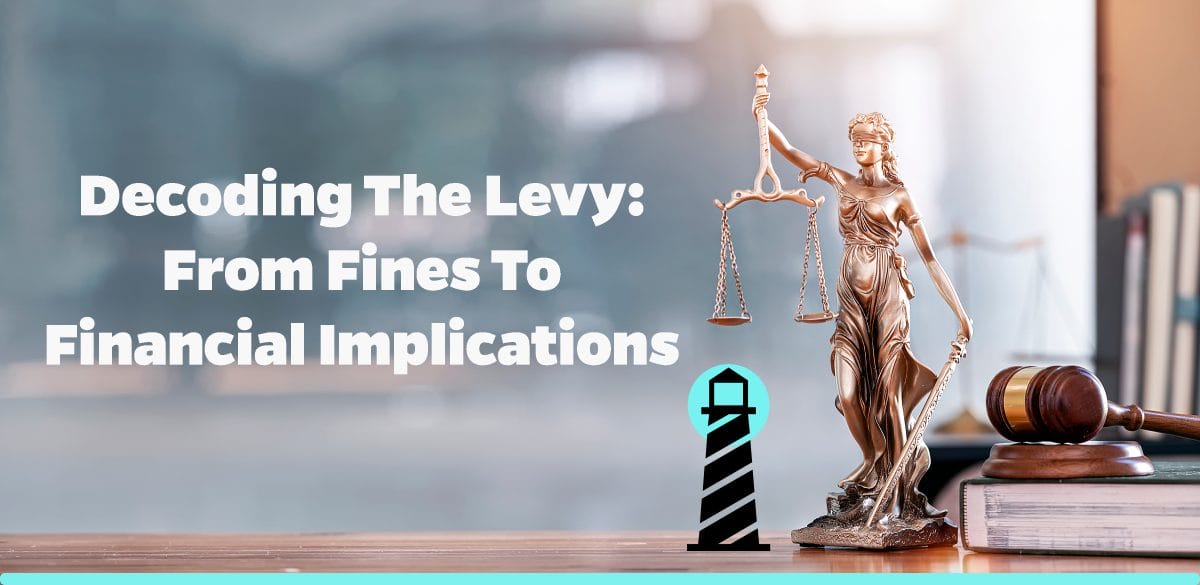Deciphering the Intricacies of Levy Fines
In the complex world of U.S. taxation, levies and fines often pose an intricate web of financial challenges for taxpayers. The levy, a tool utilized by the Internal Revenue Service (IRS), is one of the most significant facets of this landscape, with far-reaching implications for individuals and businesses. At Brightside Tax Relief, we endeavor to shed light on the implications of these levy fines, aiming to provide an in-depth understanding of what they entail and how they impact a taxpayer’s financial position.
Understanding the Concept of a Levy
To comprehend the nuances of levy fines, it is crucial first to grasp what a levy signifies in the context of U.S. taxation. Essentially, a levy is a legal seizure of a taxpayer’s property to satisfy a tax debt. When a levy is implemented, the IRS can seize and sell any type of personal or real property that you hold or that is held by someone else for you. These levies occur when taxpayers fail to pay taxes due or make suitable arrangements to clear their debts.
Instances Triggering Levy Fines
Levy fines by the Internal Revenue Service are not an automatic fallout of a tax default. Several steps precede the actual imposition of a levy. The IRS follows a due process and will issue several notices before they resort to levying a taxpayer’s property. It’s only under certain conditions – such as failure to respond to these notices or reconcile tax liabilities – does the IRS resort to imposing levy fines.
Types of Levy Fines
There are several kinds of levy fines that the IRS can impose, depending on the circumstances and the nature of the unpaid tax debt. Some of the most common types include:
• Bank Levy: The IRS instructs banks to freeze the taxpayer’s bank account for 21 days. If the tax liability is not paid within this period, the bank must transfer the funds to the IRS.
• Wage Garnishment: The IRS issues a levy to the taxpayer’s employer, which requires them to withhold a part of the employee’s wages for tax repayment.
• Seizure of Property: This includes seizing and selling the taxpayer’s personal property, such as cars or houses, to cover the tax debt.
Financial Implications of Levy Fines
The financial implications of levy fines are broad and vary depending on the individual’s unique situation. However, the primary impact is the depletion of financial resources, as funds are diverted toward settling tax debts. Furthermore, assets like bank accounts or wages can be frozen or drawn upon, often leaving individuals in a precarious financial position. In essence, levy fines can greatly disrupt one’s financial stability and economic wellbeing.
Role of Brightside Tax Relief
At Brightside Tax Relief, we understand the stress and anxiety that levy fines can induce, and our team is committed to assisting individuals and businesses navigating this challenging terrain. We provide expert advice, help negotiate payment plans with the IRS, and even recommend suitable tax relief options to manage these financial burdens.
Resources for Understanding Levy Fines
To further assist in understanding levy fines, this informational source by the Internal Revenue Service is an incredibly useful tool. It expands on the circumstances that might lead to a levy, how one might get it released, and strategies for managing the financial implications.
Conclusion: Taking Control of Your Financial Future
Understanding levy fines is a crucial facet of effective financial planning, irrespective of whether one is an individual taxpayer or a business owner. By unraveling the consequences, both immediate and long-term, taxpayers can exercise control over their financial future even amidst the challenges. At Brightside Tax Relief, we aim to empower you in your dealings with complex tax situations and offer professional guidance to overcome the financial difficulties associated with levy fines.




